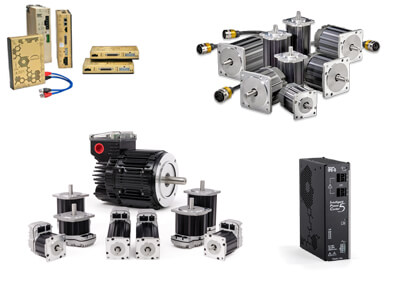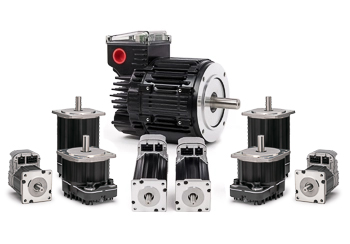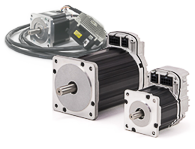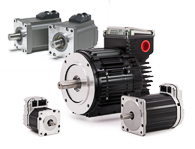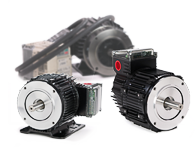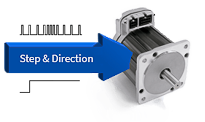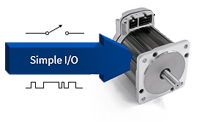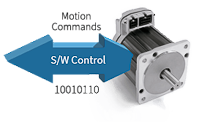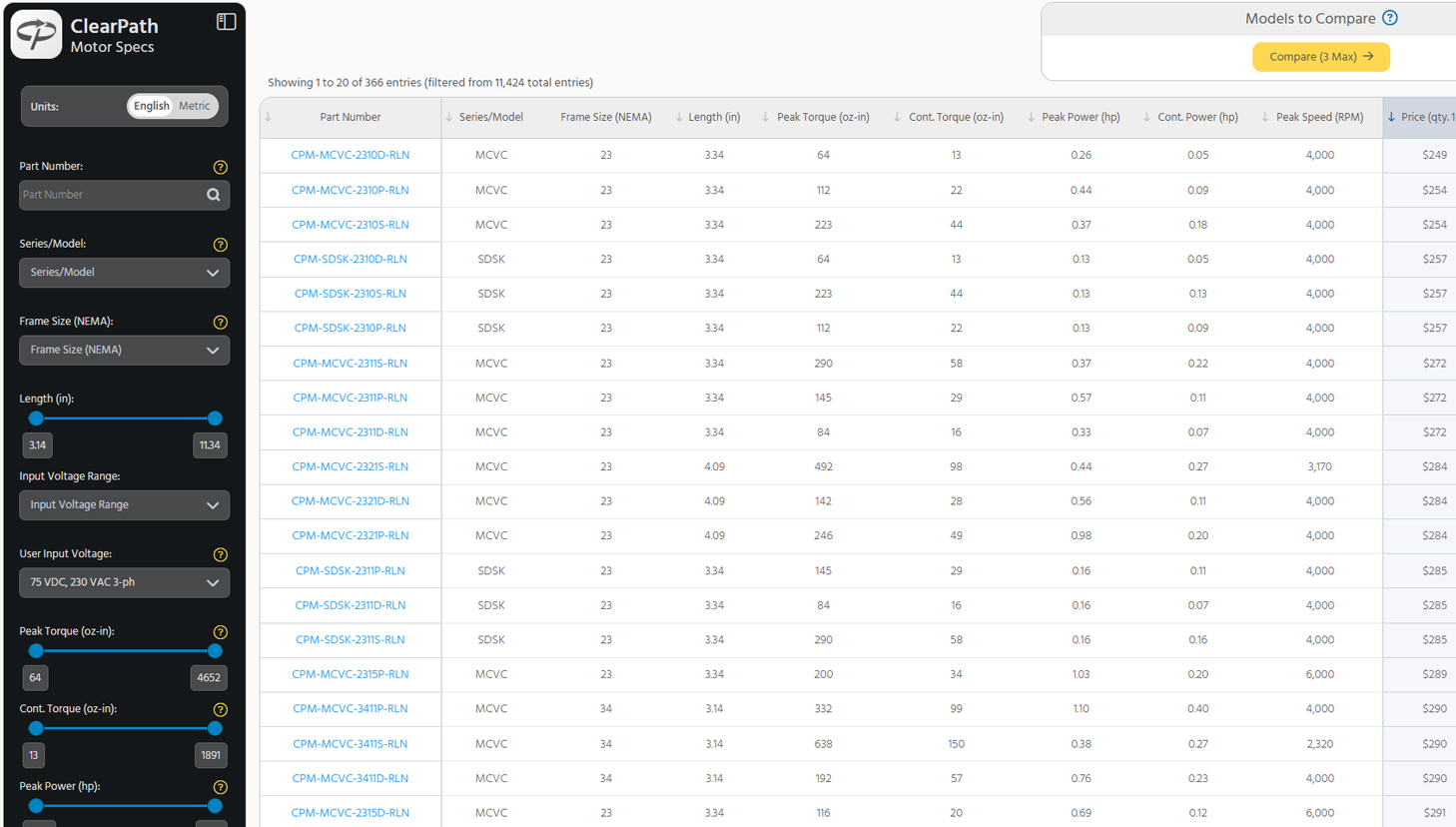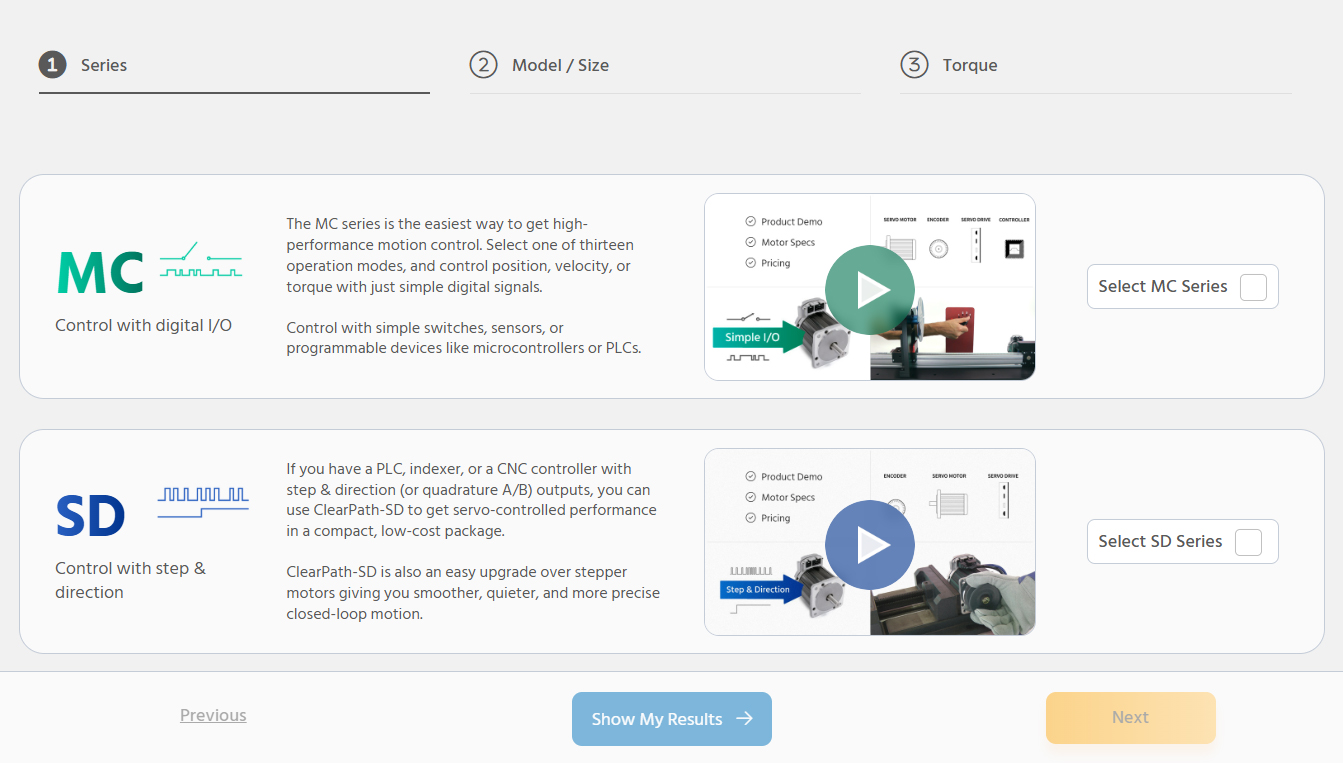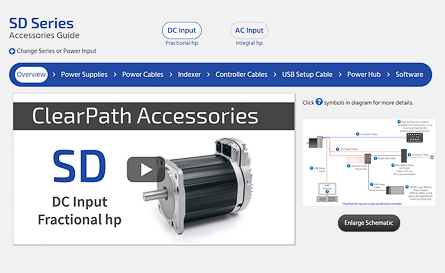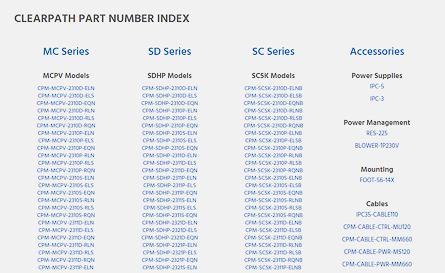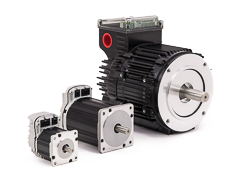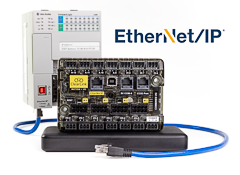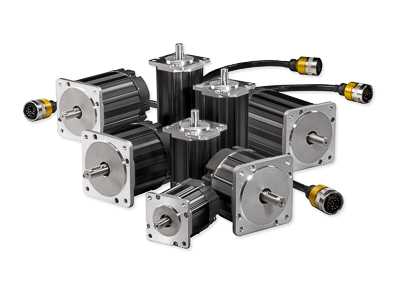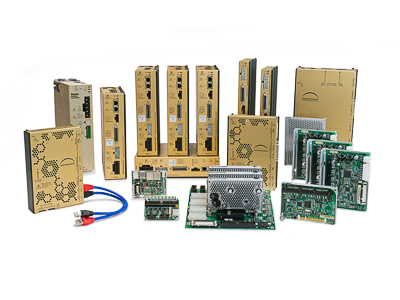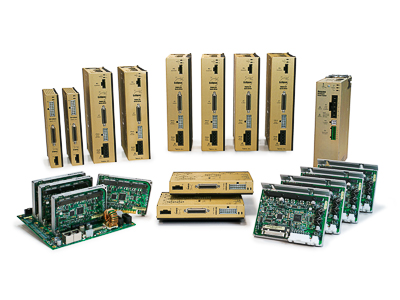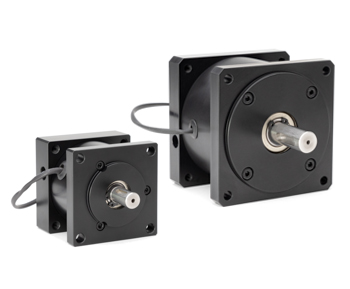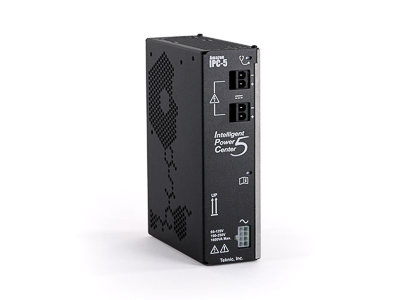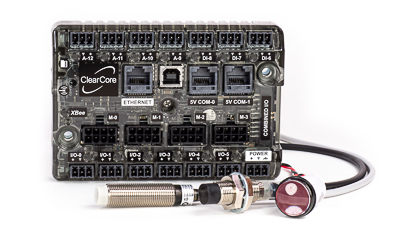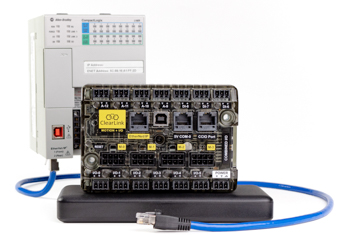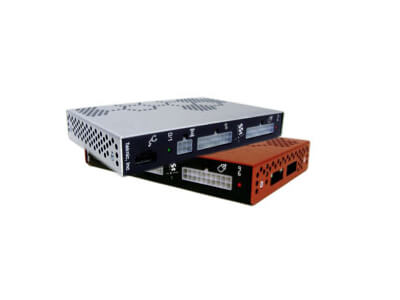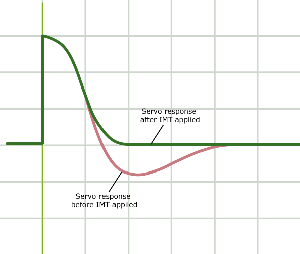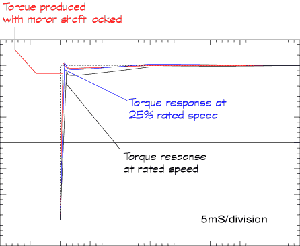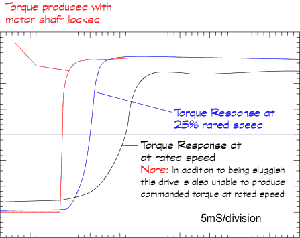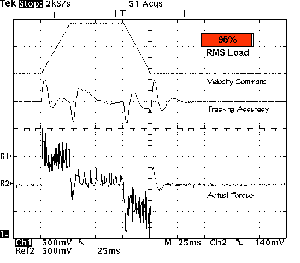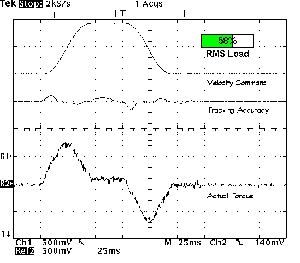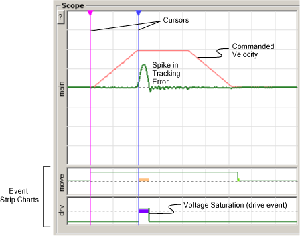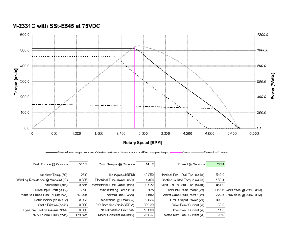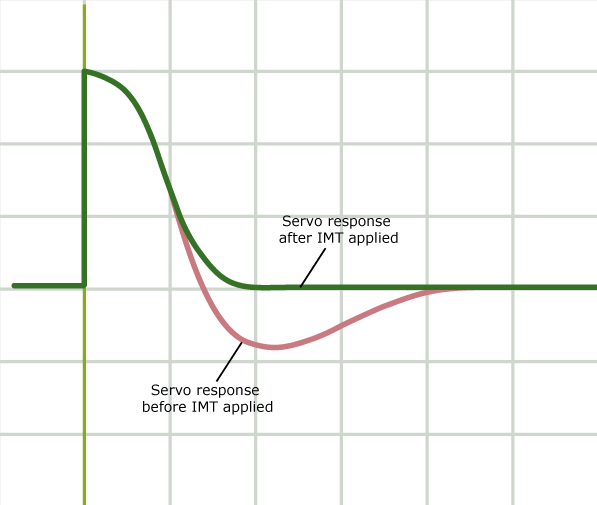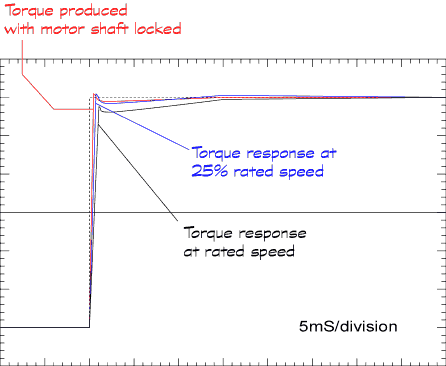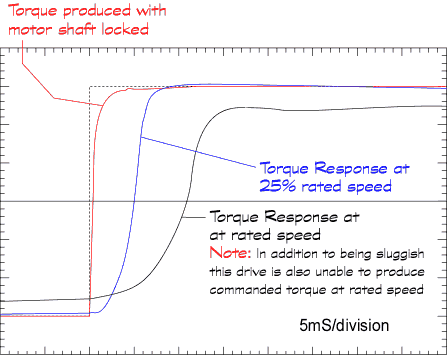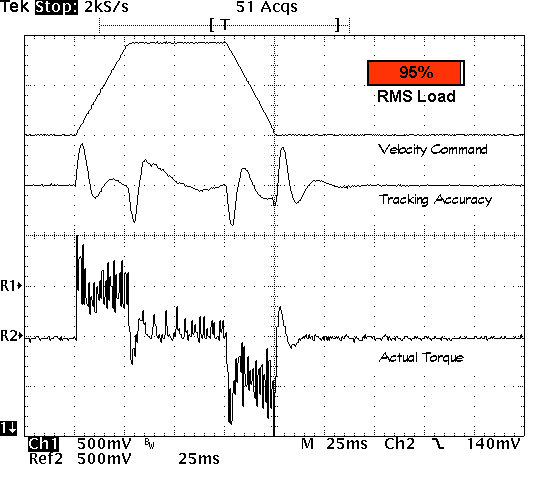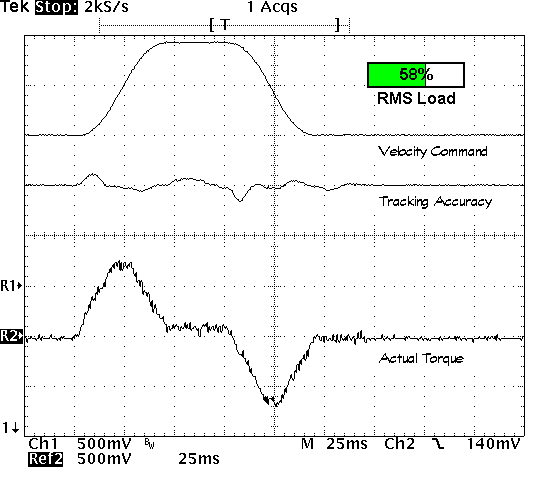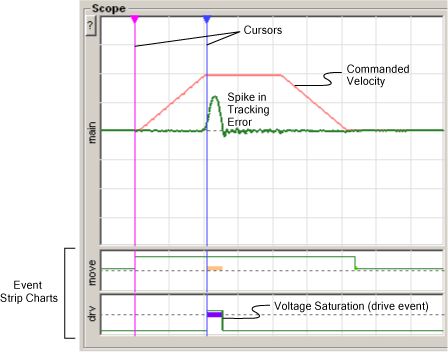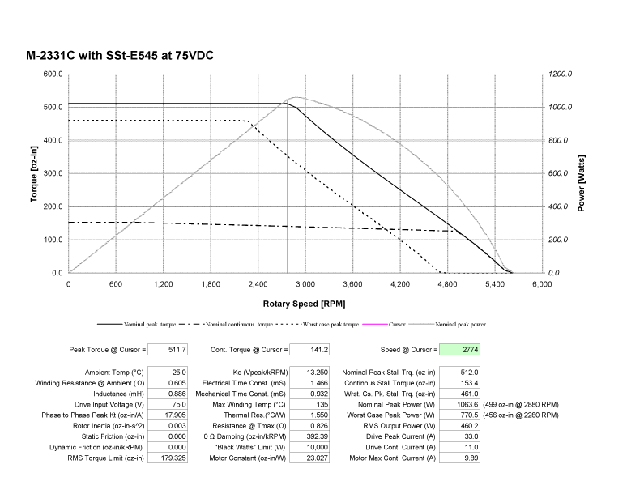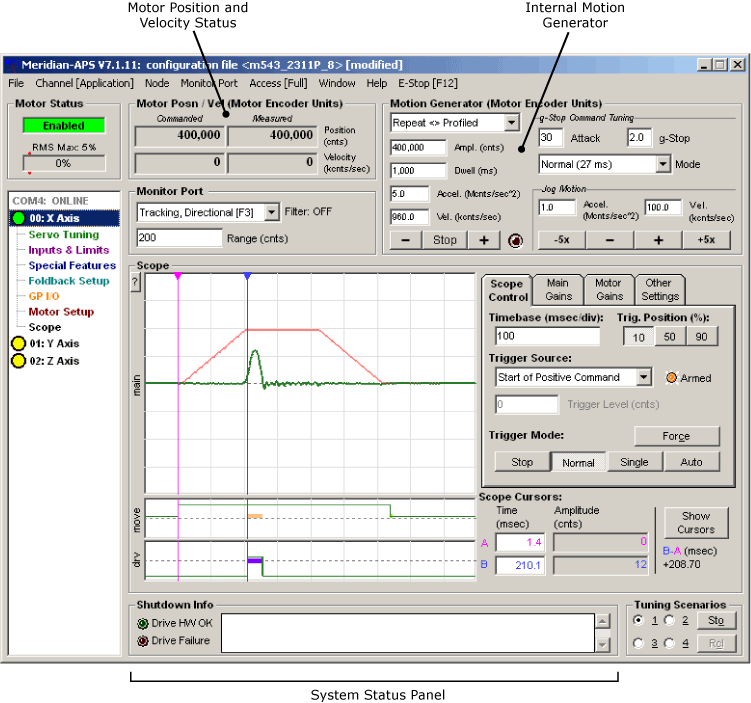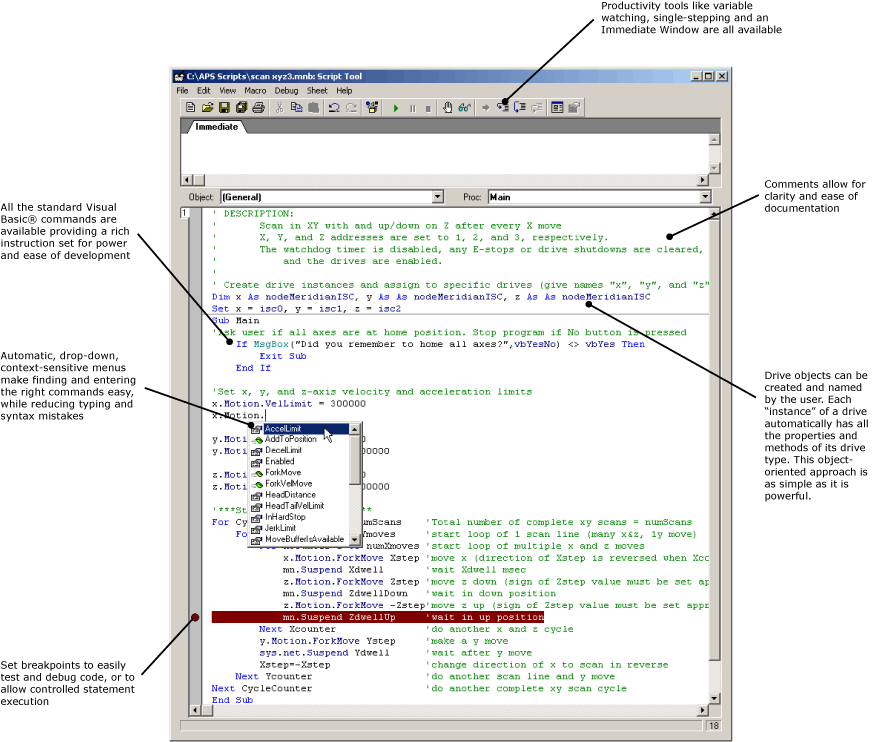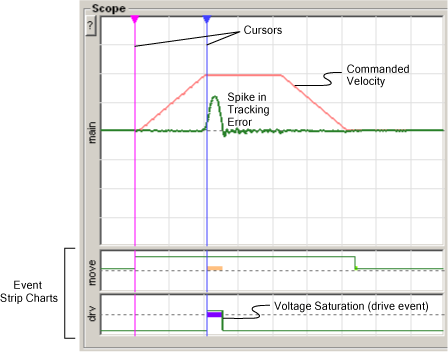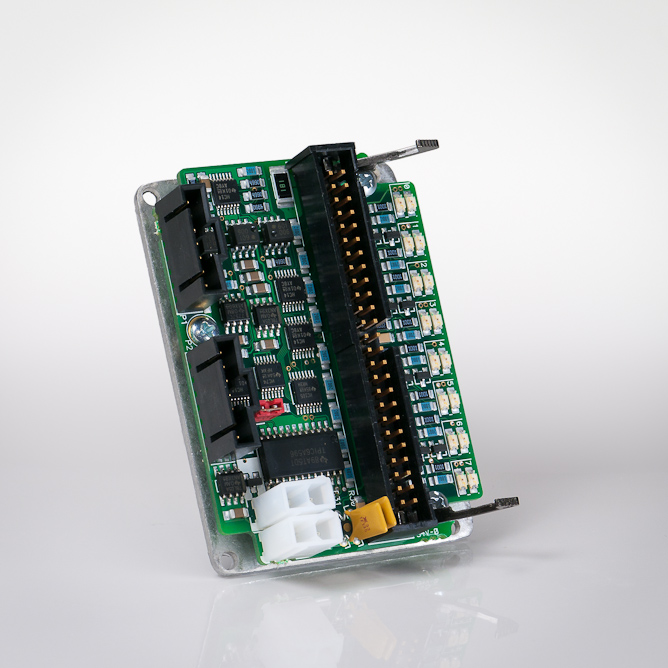Eclipse™ Drives
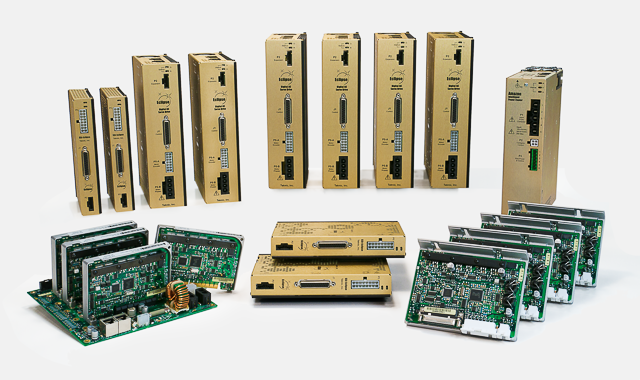
Eclipse™: State-of-the-Art Brushless Servo Motor Drives
Eclipse is Teknic’s newest generation of high-performance, all-digital brushless (and brush) servo drives for OEMs. Eclipse offers higher performance, more selection, and lower cost than ever before…
For only $199 per axis, you can get an Eclipse drive the size of a deck of cards, powerful enough to drive 2- and 3-inch servo motors with precision. And if you need lots of power, the Eclipse 760 delivers 15,000 watts of peak servo power for just $758.
With 18 different Eclipse models to choose from, you’re sure to get the perfect combination of size, power and price for every application.
Need a motion controller too?
The Meridian™ family of integrated drive/controllers has the servo performance of an Eclipse drive with a built-in motion controller.
Looking for an all-in-one solution?
ClearPath is a line of brushless servo motors that have a built-in drive and controller. Simple, compact, and lower cost than the sum of its components.
World class servo performance
Teknic’s OEM-only focus means we can offer products at substantially lower cost without any compromise in performance. In fact, with more than two dozen, unique servo algorithm innovations, Eclipse servo drives offer world-class servo performance.
Here are just a few of those technical innovations that make Eclipse the premier servo drive available at any price:
- Comprehensive, multi-derivative feedforward gains: Feedforward gains, unlike feedback gains, don’t wait for error before taking action; they command the motor’s torque in anticipation of what’s needed. Eclipse has a sophisticated feedforward model with velocity, acceleration, jerk, friction, gravity, motor resistance, inductance and back-EMF terms.Using a simple procedure, you can adjust these gains to their optimum settings. This will allow Eclipse to respond to any move command with a nearly perfect amount of torque—before errors have any chance to occur. So, the feedback gains don’t have to deal with error from trying to follow the motion profile, they just deal with external disturbances. This allows them to be set higher for more disturbance rejection without adverse effects.
- PIV feedback compensation: Eclipse uses a PI compensator with an embedded velocity loop (“PIV”) instead of the common PID compensator used in most servos. Although the structure of the PIV compensator posed some challenging design issues for Teknic, the finished product has distinct advantages over PID schemes. Eclipse’s PIV gains do not interact with each other during the tuning process, so they can be quickly and easily optimized for maximum performance. In contrast, when tuning a PID servo, any change to one gain affects all the others, so it is nearly impossible to achieve the optimum gain values
- Adaptive Inertia Matching Technology™ (“IMT”): Most servos have a position loop integrator to eliminate steady-state error, and provide stiffness and disturbance rejection. Unfortunately, an integrator’s inherent time lag causes position overshoot and potential servo instability, leading most servo manufacturers to recommend turning it off or using very low gain values. Eclipse’s IMT feature uses a proprietary technique that allows high integrator gain without causing position overshoot and instability. This provides the stiffness and disturbance rejection important for CNC systems and high-speed point-to-point applications. IMT also allows the use of smaller motors without the worry (and cost) of “inertia matching” the motor and load.
- Vector torque control: Surprisingly, most servos actually run open loop for torque control. The current in each motor phase is separately servo controlled, but that’s not the same as servo controlling the actual torque. In most servos, torque errors are only corrected indirectly—after they have resulted in velocity and position errors. Eclipse’s vector torque control works by simultaneously taking calibrated current measurements from all motor phases; combining them with information about rotor position, phase resistance, inductance and back-EMF; and using advanced vector mathematics to calculate the exact torque being produced. The phase voltages required in the next instant to produce the desired torque are then immediately applied.
- Minimum Total Servo Phase Delay (“TSPD”): TSPD is an important specification for servo systems, and is much more relevant than the more common “loop update rate”. TSPD is the total time that elapses from the time a servo starts the physical measurements of the controlled system (i.e., command input, encoder position, and motor phase currents) to the time the torque related to those measurements is actually commanded. Superior servo performance requires that very little time delay exists between measurement and response. Eclipse servo drives use a high-speed DSP and an innovative firmware architecture to achieve a remarkable 35 microsecond TSPD, the lowest published TSPD of any drive on the market today, and an estimated 3-8 times faster than most competitive systems.
- Speed-independent torque response: Torque response time is another critical, yet rarely discussed metric of servo performance. Most servo manufacturers publish torque-versus-speed curves, but those show only the steady-state torque produced by the servo at different speeds. Excellent servo control requires fast dynamic response to changes in commanded torque. It’s relatively easy to achieve fast response at low motor speed, but as speed increases, the effects of motor inductance, back-EMF and commutation frequency become significant, and cause other servo drives to degrade. Slow torque response leads to velocity and position errors, which in turn requires reducing the integrator gain and other compromising adjustments. Teknic’s sophisticated implementation of vector torque control provides highly responsive torque at all speeds.
- Sensor auto-calibration: In order to accurately control motor torque, the servo drive must be able to accurately measure the current flowing through the motor’s windings. All current sensors are subject to errors related to gain, offset and drift, and in any dynamic servo application this is compounded by the fact that the current varies tremendously, causing the sensors to heat and cool significantly. Eclipse drives use an ingenious, real-time, continuously running auto-calibration system designed to keep these critical sensors consistently accurate. This ensures repeatable performance, better torque accuracy and response time, and lower torque ripple.
- Smart saturation management: If you’ve used servos in the past, you know that manufacturers always tell you to tune them with “small” signals. This is because large signals can cause various elements in the control system to “saturate” (i.e., hit their limits), putting the servo into a non-linear, potentially unstable, operating region. With Eclipse, you have no such concerns. Eclipse uses fuzzy logic algorithms to handle saturation non-linearities with ease. We encourage Eclipse users to tune and test Eclipse-controlled systems with large, aggressive moves that send the servo deeply non-linear. This ensures robust operation under all conditions.
Unique Features
Eclipse servo drives offer more than just sheer performance. Here is a sample of the innovative features that will help make your machine design successful:
- Eclipse drives feature Teknic’s proprietary Regressive AutoSpline™ (“RAS”) technology to improve motion profiles by converting them on the fly into ultra-smooth, jerk-limited and jerk-derivative-limited profiles. You’ll be amazed by how smooth and quiet your machine can run, and how load settling time improves. Smooth and quiet motion means lower power usage, lower heat, and lower mechanical wear too.
- Eclipse’s advanced servo algorithms and design for low electrical noise greatly reduce servo “hunting” (i.e., repeated dithering ±1 encoder count around the commanded position). And if your application requires the absolute best performance in this regard, you can turn on Anti-hunt™, a sliding-mode, end-point compensator that automatically activates at the end of a move to virtually eliminate hunting. It does this with just a slight tradeoff in stiffness, but no servo deadband, and no decrease in accuracy.
- Eliminate your home sensors by using Eclipse’s hard-stop detection feature. You can achieve highly accurate and repeatable axis homing by moving the axis into a hard stop, allowing Eclipse to detect the stop and fold back the torque to a user-defined level. This eliminates the cost and wiring of a home sensor on every axis.
- Eclipse’s torque foldback modes can be used to limit torque at the end of a move (to provide a precise clamping force, for example), or in response to a digital signal, yet still have full torque available to accelerate and decelerate quickly.
- On Eclipse models with two encoder inputs, you can use one encoder on the motor and a second on the load to eliminate inaccuracy in the mechanics. Eclipse’s unique, cross-linked, dual-loop servo compensator allows unprecedented dynamic performance in these systems, giving you better position tracking and faster end-of-move settling, in addition to end-point accuracy.
Eclipse works with a wide variety of servo motors
Every Eclipse model can control brushless servo motors, brush servo motors, linear motors, voice coils, and galvos. With the Eclipse family of drives, you can run motors from tiny brush motors all the way to massive brushless servo motors delivering more than 10hp.
Most popular styles of servo motor are supported; you’re not limited to Teknic motors. Eclipse’s advanced vector torque controller incorporates resistance feedforward, inductance cross-coupling, and active back-EMF compensation, so you won’t have any problems using servo motors of any design.
Small package size with lots of power
Teknic’s innovative thermal dissipation technology allows Eclipse to pack 150 to 190 watts of peak power into every cubic inch. For example, a board-mountable Eclipse, only slightly bigger than a deck of cards (including its heat sink), delivers 2,200 watts of peak power!
More savings
Because Teknic only offers Eclipse to OEM customers, we don’t use distributors or sales reps. You buy direct from Teknic, cutting out the middlemen, and saving 15 to 35 percent. But you save in other ways, too…
Eclipse uses proven OEM-style connectors, which means they’re reliable, but also means the mating cables can be machine-built at low cost. For example, a 72-inch, high-flex, integrated motor/encoder cable connecting an Eclipse to a Teknic Hudson servo motor is only $49 (and is readily available from Teknic in custom lengths). The cost for comparable motor and encoder cable from other manufacturers is typically well over a hundred dollars.
Eclipse I/O signals are output on a standard DB25 connector, so you can use low cost, readily available serial cables to your breakout board (A 10-foot cable costs less than $8 on Amazon.com).
All drives come standard with an aluminum heat sink sufficient to meet specified performance. No need for a separate, bulky heat sink that costs more, requires additional installation time (time is money), and takes up valuable space.
And finally, although you can use virtually any three-phase brushless servo motor or brush motor with Eclipse, you’ll save even more money by combining Eclipse with Teknic’s high-performance Hudson brushless servo motors which start at $105, including connector and encoder. If you mount the drive next to the motor, the Hudson will plug directly into Eclipse, eliminating the motor cable and saving even more.
Eliminate noise problems
Eclipse’s digital “step and direction” interface is inherently noise immune compared to drives with analog control inputs. Digital filtering on all inputs adds further noise immunity. And, unlike other drives in its price range, Eclipse has full electrical isolation between its power electronics and its high speed logic circuitry. No more electrical noise problems.
Teknic’s QuietDesign™ EMI reduction system minimizes radiated noise. QuietDesign is so effective that it eliminates the need for shield clamps, ferrite slugs and other components normally required to meet regulatory compliance standards such as CE. Eclipse also has the ability to drop bus power independent of logic power, which, along with full isolation and QuietDesign, makes machine certification simple and pain-free.
Powerful and easy-to-use diagnostic tools
Automated machines are complicated. Software, mechanics, motors, I/O, and lots of interaction between them all. It’s essential to have good diagnostic tools to help locate the source of problems and to verify proper design margin. Eclipse drives have a wealth of diagnostic tools.
The main tool is a full-featured soft scope that allows you to visualize just about any variable relevant to motion control. Look at motion profiles, torque usage, tracking accuracy, voltage headroom, and many other important variables. Event strip charts show exception events (like torque saturation, voltage saturation, speed limits, shutdowns, etc.) time-aligned with your selected variable. Sophisticated trigger modes allow precise and selective triggering.
Together, these features make it easy to diagnose problems, whether servo related, software, or mechanical.
Eclipse is also capable of converting any scope variable to an analog signal to allow the use of an external measuring device such as a data logger or oscilloscope. This feature can be very handy to correlate servo events with other electrical events in the machine (e.g., power supply fluctuations, analog or digital I/O, etc.)
All drive shutdowns (for example, over-voltage or short-circuit protective shutdowns) are supported with helpful hints that suggest the likely cause of the problem. Shutdowns are also logged for future reference. And comprehensive, built-in self-test features verify proper operation of the drive.
Factory-direct technical support, free
Because Teknic works exclusively with OEM machine builders, we don’t use distributors and manufacturer’s reps. This not only cuts out middleman cost, it also means your technical support is provided directly by Teknic personnel—technical experts who specialize in products from only one manufacturer rather than fifteen or twenty. And because Eclipse’s diagnostic tools are designed to be used remotely, free expert help from Teknic engineers is only a phone call away.
Open architecture gives you design flexibility
Eclipse is compatible with a wide array of motion controllers and indexers. In positioning mode, Eclipse accepts industry-standard “step and direction” signals. In velocity or torque mode, you use standard analog commands. If you don’t have a controller chosen for your design, Teknic’s Meridian™ integrated controller/drive offers the same drive performance as the Eclipse, and includes a built-in motion controller too.
Robust and Reliable
Eclipse drives improve the robustness and reliability of your machine in two ways: 1) inherent product reliability, and 2) features that make your machine run more reliably (we call that “operational reliability”).
- Product Reliability
- uses only conservative design rules for its products (e.g., substantial voltage and thermal design margin, fault-tolerant and redundant design, no “bleeding edge” components or manufacturing techniques, etc.) to ensure robust hardware and firmware performance.
- Firmware is extensively regression tested (automated and manual), code reviewed, white box tested and black box tested before being released.
- Every drive is in-circuit tested, functionally tested (twice), and stress tested before shipping.
- Drives are protected against thermal overload and excessive ambient temperature.
- Inputs are protected against ESD, over-voltage, and over-current conditions.
- Motor phase outputs are short-circuit and overload protected.
- Eclipse-supplied encoder power and 5 volt courtesy power is short-circuit protected.
- All drives come standard with an aluminum heat sink to keep the electronics reliably cool.
- Higher power units have a metal case with a scratch-resistant, anodized coating (not a plastic cover that acts like a thermal blanket, making the electronics needlessly hotter and less reliable).
- Highest power drives come standard with an automatically controlled internal fan.
- All drives are backed by an industry-leading three year warranty. You can see we’re quite confident about the reliability of our products.
- Operational Reliability
- All drives have an isolation barrier between the PWM servo amplifier and the logic electronics, greatly reducing the chance of noise problems (which tend to be intermittent and vary from installation to installation).
- Eclipse’s IMT and other non-linear/fuzzy heuristics greatly reduce the chance of servo problems and instability as machine components wear.
- technology limits motion jerk and jerk-derivative, reducing machine vibration and mechanical wear.
- Vector commutation and safety features prevent dangerous, and often damaging, servo runaway.
- Eclipse connectors are meant for OEM applications, not low volume end-users. Terminal blocks, and other end-user-style connectors, need to be wired by hand and are failure prone.
- If you use Teknic’s Hudson motors, you can plug them directly into Eclipse drives, eliminating the need for a motor cable in many installations.
- True RMS current/power monitoring protects motors (as well as output stages, current sensors, and bus fuses).
- Isolation and digital filtering reduces the chance of noise problems, but just in case, Eclipse has encoder noise detection, commutation sensor noise detection, and step input noise detection to provide early warning of problems.
Ease of Performance™
High performance combined with ease of use is what we call “Ease of Performance” All Teknic features must pass internal review for Ease of Performance. In fact, we regularly withhold the introduction of promising technology until it’s easy to use.
Here are a couple of examples of Teknic innovations that make high performance remarkably easy to attain:
- Most servos use PID compensators that are often maddeningly difficult to tune. Every time you adjust one gain, the effect of the other gains changes; you need to tediously iterate until you eventually converge on what you hope to be the optimal tuning. Eclipse uses an advanced PIV compensator that is tuned in a simple and orderly sequence. Just tune the gains in progression, 1-2-3, and you’re done. No more back and forth. Much simpler (and higher performance too).
- The IMT and other stability enhancing algorithms ensure robust tuning. No more tweaking each machine off the production line to get consistent performance, and no more servo stability problems in the field as parts wear and machine characteristics change. Eclipse’s stability enhancing algorithms also elegantly handle variations in axis inertia, common in material handling axes and non-Cartesian systems. Although the IMT algorithm is complex, involving numerous state variables, using it only requires following a simple procedure to set a single parameter.
We gave careful thought to even mundane design elements like wiring:
- There are no terminal blocks to hand wire (and come loose).
- The DC bus (on E4xx-E7xx drives) has dual power connectors to allow convenient daisy-chained power distribution. And because fuses are required in the DC bus in order to meet machine safety certification, we included those too. This eliminates routing all power though a distribution panel for easier wiring and lower cost.
- Eclipse’s power connections and motor phase connections are not mixed on the same connector. Get rid of those hard-to-make cables that lead off in multiple directions.
- Similarly, where possible, Eclipse’s motor phase and encoder connections are combined on same connector, so you don’t need multiple cables going to each motor.
Designed, Built and Tested in the USA
All Eclipse drives are assembled using skilled production technicians right here in Rochester, New York, under the close supervision of the engineers that designed them. You don’t have to worry about the quality issues and uncertain lead times associated with overseas manufacturing.
Unsurpassed warranty protection
Eclipse drives are the result of over twenty years of continuous improvement in design and manufacturing reliability. Because of this, Teknic can confidently offer a three year parts and labor warranty on all Eclipse products. In fact, Eclipse’s warranty is more than three full years; it’s good for three years after you install it in a machine (up to an additional six months from purchase date). We want to make sure you get warranty protection for three full years of actual usage.
Ensured Application Success
Teknic’s OEM-only focus means you’ll work with factory specialists who will create a solid-body simulation of your application (free of charge) to ensure you get the optimum drive (not too big, not too small).
Teknic will also create a custom torque/speed curve made specifically for whatever motor you plan to use (hopefully a Teknic Hudson motor, although Eclipse drives are compatible with virtually every brushless or brush servo motor).
To get volume pricing, full specifications and other downloads, just fill in a quick registration form (less than 30 seconds, we promise).
If you have any questions, email Teknic, or call us at (585) 784-7454.
We can also help you decide which models are right for each axis of your machine; we’ll do a free, solid-body simulation based on your specific requirements.
We can also provide a formal price quote for everything you need for a complete systems. Contact Teknic now.

